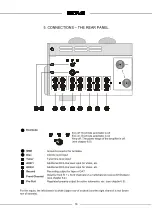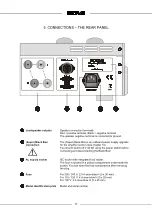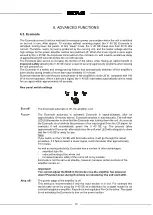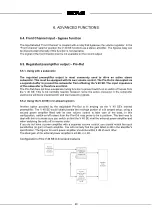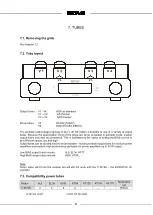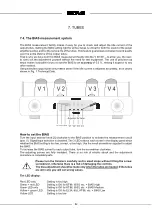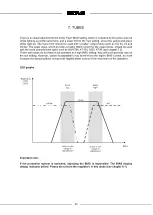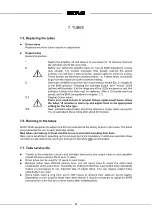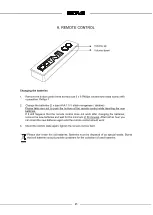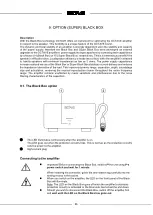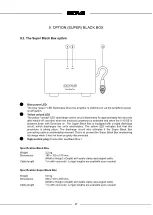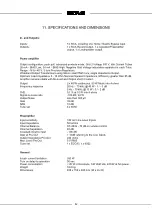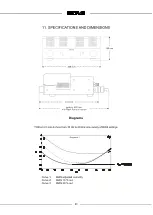
30
10. TROUBLESHOOTING
10.2. Faults caused by tubes, faulty tubes
Like other OCTAVE products, the V 40 SE is equipped with a double safety system. This means that
the amplifier will be protected from damage if a component (tube) should fail and trip the electronic
protection. The protection system protects the amplifier and the tubes from overload. This technology
has proven its worth in recent years.
It has enabled us to reduce our overall failure rate (except for
output tubes, which we are unable to control 100 %) to virtually zero
.
OCTAVE equipment will achieve
a service life of 10 to 15 years without needing to be serviced.
We feel that this is particularly
important aspect of tube equipment design, as many preconceptions still exist about the technology's
durability and long-term stability.
There are a number of reasons why tubes might fail at some point in their lifetime. You can fault-find
tubes by examining their behavior.
Mechanical fault that does not trip the V 40 SE's protection
The tube's heater filament no longer glows
No matter whether it is a driver tube or an output tube, no tube can work without a properly functioning
heater.
Output tube heater fault
When the heater system on an output tube fails, you will be unable to adjust the BIAS. The particular
tube will refuse to move from the minus setting. A loose connection inside the tube could have caused
the heater to fail. It may be possible to repair the connection by mechanical means. If the BIAS was
previously badly misadjusted, the BIAS might "runaway", tripping the electronic protection.
This is why you should never turn the BIAS screws to the extreme right and leave them there. If you
have not been able to adjust the BIAS satisfactorily, turn the adjuster screw back to its extreme left
position.
Driver tube heater fault
If this happens, you will normally lose an entire channel, depending on which driver tube system is
affected by the faulty heater. This can only be established by a visual examination. The heater
filaments are often difficult to see inside the driver tubes, since they only protrude very slightly from
the tube system. We use double triodes exclusively, i.e. there are always two identical tube systems
within the glass envelope. Because each of these triode systems has its own heater, you should
always be able to see two glowing filaments. If you can only see one, it means that the tube is faulty.
A tube has developed an air leak
The glass envelope of all tubes normally contains a vacuum. In order to maintain the vacuum
throughout the service life of the tube, there is a device inside the tube that absorbs the residual gas.
It is called the getter pill. It normally takes the form of a small crucible near the top of the tube. It
contains a substance known as the getter, which absorbs and permanently retains the residual gas.
This device ensures that the tube maintains a high vacuum during its entire service life. Hairline
cracks around the base and leaks around the socket pins can cause the tube to take in air. Because
the getter is only able to absorb a finite amount of gas, it will soon stop working. The silver coating
at the top of the tube will then begin to discolor. If a tube has an air leak, you will not be able to adjust
its BIAS voltage. As soon as a certain amount of air leaks into the tube, it will stop working completely
and the heater filament will burn through.

